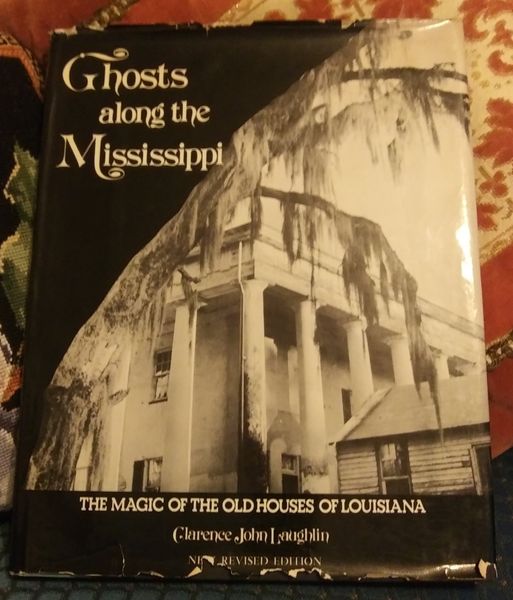DISPATCHES FROM HOME: Ghosts Along the Mississippi.

In the Prologue of GHOSTS ALONG THE MISSISSIPPI, the book’s author, Clarence John Laughlin, writes: “This book will attempt to present the evolution of Louisiana plantation culture, in terms of the contrast, and the adhesion of two subtly related, unlike, elements—that which may roughly be called historico-architectural, and that which pulsates around poetic vision.”
Mr. Laughlin’s book, first published in 1948, presents the beauty and mystery of Louisiana’s plantation houses in exquisite black and white photography. When published, most of the homes were in various stages of decay, with the wrecker’s ball hovering around their front doors.
I purchased my copy of the book in 1977 at Marshall’s book store in downtown Gulfport, once located in what is now part of the Half Shell Oyster House. Thumbing through the book, I was mesmerized by the somewhat romantic decay of these once-grand old mansions, their waning beauty calling out from behind lacy frames of trailing Spanish moss.
However, the book does seem to be torn between two lovers, as it were. Is it just about architecture, or is it a study of the magic of black and white photography? The book’s narrative, written in a sentimental, artsy style, is reminiscent of another day and age. But the photographs themselves express everything that needs to be said about the beauty of these long-ago architectural masterpieces, built by the hands of slaves, and the sad onslaught of their neglect and loss.
The last photograph in the book is titled—THE FINAL BELL. It shows a rusty plantation bell hanging from a broken wooden pole. Mr. Laughlin writes: “While the bell stays soundless; with an utter and overwhelming finality; as though it has just tolled the death of plantation culture, and now must remain, its tongue forever still—in the silent and now darkening air…” (October 27 2023)

